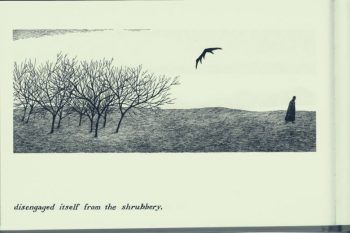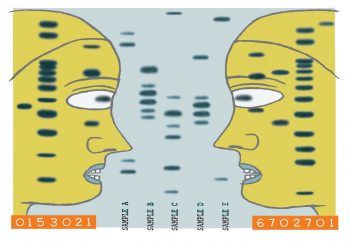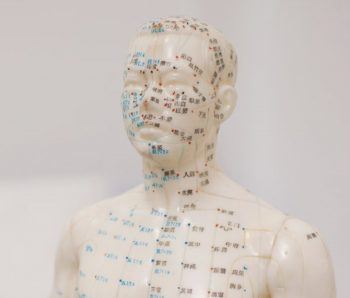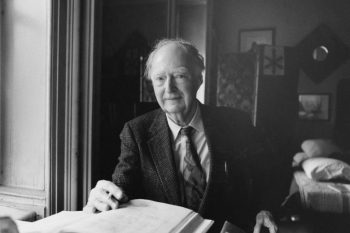Month: March 2019
Christchurch Shooting Footage: Why You Shouldn’t Watch The Video, And What To Do If You Did
Dimi Reider in Newsweek:

The very fact terrorists exploit people’s interest in dramatic events should caution you against typing in that search string, and certainly against sharing it with others.
Firstly, by doing so you’d be playing up to the narcissism of someone who couldn’t come up with any more adequate way to generate renown than to massacre innocent people. Whatever false modesty Tarrant might profess in the tedious manifesto ascribed to him, a quality shared universally by terrorists of all ilks is the desire to stand out from the crowd, to be seen—if only by themselves—as heroes and possibly martyrs. There’s plenty to be said for simply declining to oblige their desire for notoriety.
Secondly, it is difficult to imagine a more intimate moment in any person’s life than dying. Tarrant not only brutally brought this moment forward for dozens of innocent people, who had so many more years to live and so much more than him to give to their families, communities and to the country they made their home. He was determined to humiliate them, to make them look like targets in a video game. If you want to know more about the victims, wait for their life stories to emerge. By looking through the killer’s helmet camera, you are adopting his gaze, and actively participating in this indignity.
Thirdly, and as importantly, just because you’re not at the scene and not in any immediate risk, this does not mean that you will not be affected.
More here.
Friday Poem
To Alexander Fu on His Beginning and 13th Birthday
Cut from your mother, there was a first heartache,
a loneliness before your first peek
at the world, your mother’s hand was a comb
for your proud hair, fresh from the womb—
born at night, you and moonlight tipped the scale
a 6lb 8oz miracle,
a sky‐kicking son
born to Chinese obligation but already American.
You were a human flower, a pink carnation.
You were not fed by sunlight and rain.
You sucked the wise milk of Han.
Your first stop, the Riverdale station,
a stuffed lion and meditation.
Out of PS 24, you will become
a full Alexander moon over the trees
before you’re done. It would not please
your mother to have a moon god for a son.
She would prefer you had the grace
to be mortal, to make the world a better place.
There is a lesson in your grandmother’s face:
do not forget the Way
of your ancestors. Make a wise wish
on your 13th birthday, seize the day
from history and geography.
If you lead, you will not lose the Way,
in your family’s good company
where wisdom is common as a sunfish,
protected from poisonous snakes by calligraphy:
paintings of many as the few, the few as many.
You already dine on a gluten‐free dish
of some dead old King’s English.
In your heart, keep Fu
before Alexander and do
unto others as you would have others do
unto you.
by Stanley Moss
from Ecotheo Review
The Unclubbable Edward Gorey
Phil Baker at the TLS:
 With its somewhat whimsical skulls and bats, Gorey’s more accessible work has all the trimmings of Gothic Lite, part of the same cultural wave that has made H. P. Lovecraft’s Cthulhu into a popular plush toy. It tends to be set in a waveringly Victorian-Edwardian fin-de-siècle, or a louche and sometimes sinister vision of the 1920s. As Dery notes, Gorey’s retro negativity is partly “a code for signaling a conscientious objection to the present” and its crass positivity (its “Trumpian vulgarity”, as Dery calls it). Gorey’s friend Alison Lurie sees his fascination with funereal Victorianism as a reaction to the 1950s ethos according to which “everything was wonderful and we lived forever and the sun was shining”; and the Washington Post writer Henry Allen described him, in an obituary appreciation, as having “reached deeper into the educated American psyche” than Charles Addams, with whom he was sometimes paired: for Allen, he defied “the clamorous Doris Day optimism rampant at the start of his career”. Another of Gorey’s sharpest commentators, Thomas Garvey, writing in a context of Queer Theory, has suggested that Gorey’s ironic perversity “allows his art to be re-purposed by heterosexuals into a tonic for the pressures of wholesomeness”.
With its somewhat whimsical skulls and bats, Gorey’s more accessible work has all the trimmings of Gothic Lite, part of the same cultural wave that has made H. P. Lovecraft’s Cthulhu into a popular plush toy. It tends to be set in a waveringly Victorian-Edwardian fin-de-siècle, or a louche and sometimes sinister vision of the 1920s. As Dery notes, Gorey’s retro negativity is partly “a code for signaling a conscientious objection to the present” and its crass positivity (its “Trumpian vulgarity”, as Dery calls it). Gorey’s friend Alison Lurie sees his fascination with funereal Victorianism as a reaction to the 1950s ethos according to which “everything was wonderful and we lived forever and the sun was shining”; and the Washington Post writer Henry Allen described him, in an obituary appreciation, as having “reached deeper into the educated American psyche” than Charles Addams, with whom he was sometimes paired: for Allen, he defied “the clamorous Doris Day optimism rampant at the start of his career”. Another of Gorey’s sharpest commentators, Thomas Garvey, writing in a context of Queer Theory, has suggested that Gorey’s ironic perversity “allows his art to be re-purposed by heterosexuals into a tonic for the pressures of wholesomeness”.
more here.
Helado Negro’s New Songs
Hua Hsu at The New Yorker:
 In June, 2015, Roberto Carlos Lange, who records as Helado Negro, released a single titled “Young, Latin and Proud.” Despite the bold title, the song sounded more like a flicker than like a flame. It was tranquil and soothing, with Lange singing gently, almost timidly, over a swaying synth line. His lyrics were addressed to a younger version of himself—someone searching for the language to make sense of his own story: “And you can only view you / With what you got / You don’t have to pretend / That you got to know more / ’Cause you are young, Latin, and proud.”
In June, 2015, Roberto Carlos Lange, who records as Helado Negro, released a single titled “Young, Latin and Proud.” Despite the bold title, the song sounded more like a flicker than like a flame. It was tranquil and soothing, with Lange singing gently, almost timidly, over a swaying synth line. His lyrics were addressed to a younger version of himself—someone searching for the language to make sense of his own story: “And you can only view you / With what you got / You don’t have to pretend / That you got to know more / ’Cause you are young, Latin, and proud.”
That “Young, Latin and Proud” was released within days of Donald Trump’s announcement of his Presidential candidacy made it seem like a timely anthem for immigrant America. But Lange’s song was actually part of an ongoing conversation with himself. Before then, Lange had released four albums of quirky, folky electronic pop, often sung in Spanish. Songs such as “Young, Latin and Proud” and the shivery, dreamlike “It’s My Brown Skin,” both of which appeared on his album “Private Energy” (2016), anchored the playful, searching quality of his music in questions of personal intimacy.
more here.
The Forgotten Novels of Pamela Hansford Johnson
Lavinia Greenlaw at the LRB:
 Sex is Johnson’s true subject. She respects its power and repeatedly enacts a woman’s right to sexual realisation. Physical contact is something so fraught and regulated as to be inherently violent. Violence can come out of detachment too: ‘He dragged at the vee of her dress and put his fingers to her breasts.’ Elsie is intent on discovering the facts of life and perturbed by ‘the knitting of her flesh’ when she passes a couple kissing under a tree. When she acquires a boyfriend, Roly, he says he’ll take her clothes off and thrash her if she looks at someone else. Elsie counters that she’d rather like that before realising she has ‘said something very wrong’. She lies down with him but resists. On the way home Roly stops off to see Mrs Maginnis. He orders Nietzsche and Freud in the local library, and arranges a date with the librarian. He blames Elsie’s resistance on the ‘whole social system … When a man loves a woman, he ought to be able to sleep with her right away, and then there would be no repressions or inhibitions.’ When they finally get married and go to bed, ‘there was no fear in her, nor love, only a great loneliness.’
Sex is Johnson’s true subject. She respects its power and repeatedly enacts a woman’s right to sexual realisation. Physical contact is something so fraught and regulated as to be inherently violent. Violence can come out of detachment too: ‘He dragged at the vee of her dress and put his fingers to her breasts.’ Elsie is intent on discovering the facts of life and perturbed by ‘the knitting of her flesh’ when she passes a couple kissing under a tree. When she acquires a boyfriend, Roly, he says he’ll take her clothes off and thrash her if she looks at someone else. Elsie counters that she’d rather like that before realising she has ‘said something very wrong’. She lies down with him but resists. On the way home Roly stops off to see Mrs Maginnis. He orders Nietzsche and Freud in the local library, and arranges a date with the librarian. He blames Elsie’s resistance on the ‘whole social system … When a man loves a woman, he ought to be able to sleep with her right away, and then there would be no repressions or inhibitions.’ When they finally get married and go to bed, ‘there was no fear in her, nor love, only a great loneliness.’
more here.
Jailed Saudi women activists receive PEN Freedom to Write Award
Hillel Italie in The Christian Science Monitor:
 Three Saudi women’s rights activists whose arrests last year have been condemned worldwide are being honored by PEN America. Nouf Abdulaziz, Loujain al-Hathloul, and Eman al-Nafjan have won the PEN/Barbey Freedom to Write Award, the literary and human rights organization announced Thursday. The award was established in 1987 and is given to writers imprisoned for their work, with previous recipients coming from Ukraine, Egypt and Ethiopia among other countries.
Three Saudi women’s rights activists whose arrests last year have been condemned worldwide are being honored by PEN America. Nouf Abdulaziz, Loujain al-Hathloul, and Eman al-Nafjan have won the PEN/Barbey Freedom to Write Award, the literary and human rights organization announced Thursday. The award was established in 1987 and is given to writers imprisoned for their work, with previous recipients coming from Ukraine, Egypt and Ethiopia among other countries.
In custody for working to “undermine the security” of the kingdom, Ms. Abdulaziz, Ms. Hathloul, and Ms. Nafjan have openly opposed such government policies as a ban on women driving and the restriction of women’s travel, education, and other rights without approval from a male guardian. On Wednesday, Ms. Hathloul and Ms. Nafjan were among those at a closed-door hearing in Riyadh, according to Amnesty International. Reporters were not allowed in. The PEN award comes at a time of international outrage at Saudi Arabia and at Crown Prince Mohammed bin Salman, especially after the Saudi journalist and Washington Post columnist Jamal Khashoggi was murdered in October 2018 by Saudi agents at the country’s consulate in Istanbul. Last week, the United Nations Human Rights Council denounced Saudi Arabia’s “continuing arrests and arbitrary detentions of human rights defenders”
Activists have alleged that the PEN winners have been subjected to torture, including flogging and sexual assault. Saudi officials have denied the allegations.
More here.
Adopt a moratorium on heritable genome editing
Eric Lander et al in Nature:
 We call for a global moratorium on all clinical uses of human germline editing — that is, changing heritable DNA (in sperm, eggs or embryos) to make genetically modified children. By ‘global moratorium’, we do not mean a permanent ban. Rather, we call for the establishment of an international framework in which nations, while retaining the right to make their own decisions, voluntarily commit to not approve any use of clinical germline editing unless certain conditions are met. To begin with, there should be a fixed period during which no clinical uses of germline editing whatsoever are allowed. As well as allowing for discussions about the technical, scientific, medical, societal, ethical and moral issues that must be considered before germline editing is permitted, this period would provide time to establish an international framework.
We call for a global moratorium on all clinical uses of human germline editing — that is, changing heritable DNA (in sperm, eggs or embryos) to make genetically modified children. By ‘global moratorium’, we do not mean a permanent ban. Rather, we call for the establishment of an international framework in which nations, while retaining the right to make their own decisions, voluntarily commit to not approve any use of clinical germline editing unless certain conditions are met. To begin with, there should be a fixed period during which no clinical uses of germline editing whatsoever are allowed. As well as allowing for discussions about the technical, scientific, medical, societal, ethical and moral issues that must be considered before germline editing is permitted, this period would provide time to establish an international framework.
Thereafter, nations may choose to follow separate paths. About 30 nations currently have legislation that directly or indirectly bars all clinical uses of germline editing1, and they might choose to continue the moratorium indefinitely or implement a permanent ban. However, any nation could also choose to allow specific applications of germline editing, provided that it first: gives public notice of its intention to consider the application and engages for a defined period in international consultation about the wisdom of doing so; determines through transparent evaluation that the application is justified; and ascertains that there is broad societal consensus in the nation about the appropriateness of the application. Nations might well choose different paths, but they would agree to proceed openly and with due respect to the opinions of humankind on an issue that will ultimately affect the entire species.
To be clear, our proposed moratorium does not apply to germline editing for research uses, provided that these studies do not involve the transfer of an embryo to a person’s uterus. It also does not apply to genome editing in human somatic (non-reproductive) cells to treat diseases, for which patients can provide informed consent and the DNA modifications are not heritable.
More here.
Thursday Pi Day
Because it’s PI Day:

pi is perfection with a
loose end
three point one four and so on
without pattern or closure
the precision of a mandala
drawn by a drunk on two martinis
not describing wholeness merely
but thinking odd numbers
spouting them while rambling home
disheveled, irrational, unseemly
as the similar square root of two
at the edge of life
and infinity
Jim Culleny
3/14/15
Thursday Poem
Radium Dream
We come at the wrong time of year by a hair
or a week, and the brown birds flying onward,
out of reach. My son tilts his head. A minor star-
burst of cranes lights the far corner of
the sky—stragglers, fewer than expected,
but enough to glitter the air with strangeness—
these birds with their necks not tucked in, forming
their odd cries. When they land by the shore,
their toothpick legs appear hardly enough
to hold up their robust bodies. Often
I think—”That’s not really happening is it?” as though I
were acting in a film or a vision of a life. On the
highway, they warn us not to drink—too much
uranium, leached down from the abandoned mines.
The cranes twist their necks to stab the quick-
light of fish. Do cranes know how to
swim? And why is swimming so different than flying?
Now, aloft again, they apparate with uncanny
quickness into cloud. How does the eye lose
them—is it how high they rise? The bones
in my son’s hand, they tell me, have stopped growing
too early. They act like this is a problem, but I
have radium dreams—a brightness: Him, me, you, the
cranes, and in them nothing dies.
by Sheila Black
from Split This Rock Magazine
One Twin Committed the Crime — but Which One? A New DNA Test Can Finger the Culprit
Carl Zimmer in the New York Times:
 One night in November 1999, a 26-year-old woman was raped in a parking lot in Grand Rapids, Mich. Police officers managed to get the perpetrator’s DNA from a semen sample, but it matched no one in their databases.
One night in November 1999, a 26-year-old woman was raped in a parking lot in Grand Rapids, Mich. Police officers managed to get the perpetrator’s DNA from a semen sample, but it matched no one in their databases.
Detectives found no fingerprints at the scene and located no witnesses. The woman, who had been attacked from behind, could not offer a description. It looked like the rapist would never be found.
Five years later, there was a break in the case. A man serving time for another sexual offense submitted a DNA sample with his parole application. The sample matched DNA from the rape scene.
There was just one catch: The parolee had an identical twin, and standard DNA tests can’t distinguish between identical twins. Prosecutors had no additional evidence to rule out one or the other. Because they couldn’t press charges against either of the men, the case remains open nearly 20 years later.
More here.
Surgical stitch-up: meet the placebo surgeon
Xan Rice in The New Statesman:
 At Oxford University’s Nuffield Department of Orthopaedics, Rheumatology and Musculoskeletal Sciences, which he heads, Carr was conducting a clinical trial of decompression surgery, to assess its effectiveness. He explained to Brennan that if she agreed to participate she would be randomly assigned to one of three groups. The first would receive regular surgery. The second set would get “placebo surgery”, with all the surgical procedures identical to the normal operation except that no bone or tissue would be removed. Patients in these two groups would not know if they’d had the real or sham surgery. The third group would receive no treatment.
At Oxford University’s Nuffield Department of Orthopaedics, Rheumatology and Musculoskeletal Sciences, which he heads, Carr was conducting a clinical trial of decompression surgery, to assess its effectiveness. He explained to Brennan that if she agreed to participate she would be randomly assigned to one of three groups. The first would receive regular surgery. The second set would get “placebo surgery”, with all the surgical procedures identical to the normal operation except that no bone or tissue would be removed. Patients in these two groups would not know if they’d had the real or sham surgery. The third group would receive no treatment.
“My immediate reaction was: yes, of course I’ll do it, because that’s the sort of person I am,” Brennan told me when we met recently for coffee in an Oxford bookshop. “But I was concerned that I might end up in the ‘do nothing’ category, as I was already at my wits’ end.”
More here.
The Misinformation Age: how false beliefs spread
Cailin O’Connor and James Owen Weatherall in Imperfect Cognitions:
 Since early 2016, in the lead-up to the U.S. presidential election and the Brexit vote in the UK, there has been a growing appreciation of the role that misinformation and false beliefs have come to play in major political decisions in Western democracies. (What we have in minds are beliefs such as that vaccines cause autism, that anthropogenic climate change is not real, that the UK pays exorbitant fees to the EU that could be readily redirected to domestic programs, or that genetically modified foods are generally harmful.)
Since early 2016, in the lead-up to the U.S. presidential election and the Brexit vote in the UK, there has been a growing appreciation of the role that misinformation and false beliefs have come to play in major political decisions in Western democracies. (What we have in minds are beliefs such as that vaccines cause autism, that anthropogenic climate change is not real, that the UK pays exorbitant fees to the EU that could be readily redirected to domestic programs, or that genetically modified foods are generally harmful.)
One common line of thought on these events is that reasoning biases are the primary explanation for the spread of misinformation and false belief. To give an example, many have pointed out that confirmation bias – the tendency to take up evidence supporting our current beliefs, and ignore evidence disconfirming them – plays an important role in protecting false beliefs from disconfirmation.
In our recent book, The Misinformation Age: How False Beliefs Spread, we focus on another explanation of the persistence and spread of false belief that we think is as important as individual reasoning biases, or even more so. In particular, we look at the role social connections play in the spread of falsehood. In doing so we draw on work, by ourselves and others, in formal social epistemology. This field typically uses mathematical models of human interaction to study questions such as: how do groups of scientists reach consensus? What role does social structure play in the spread of theories? How can industry influence public beliefs about science?
More here.
For Pi Day: What Happens When Maths Goes Wrong?
Why is the far right obsessed with gold?
Quinn Slobodian in The New Statesman:
 In 2010, a precious metals blogger called Peter Boehringer posted an image of Karl Marx’s head floating over Frankfurt, the home of the European Central Bank. Like many online “gold bugs,” his message reflected the belief that currencies without the backing of gold amount to “monetary socialism” and pave the way to government overreach and eventual economic collapse. Boehringer now sits in the German Bundestag for the Alternative for Germany Party (AfD), and chairs the parliament’s budget committee.
In 2010, a precious metals blogger called Peter Boehringer posted an image of Karl Marx’s head floating over Frankfurt, the home of the European Central Bank. Like many online “gold bugs,” his message reflected the belief that currencies without the backing of gold amount to “monetary socialism” and pave the way to government overreach and eventual economic collapse. Boehringer now sits in the German Bundestag for the Alternative for Germany Party (AfD), and chairs the parliament’s budget committee.
A few years later, the far-right leader Marine Le Pen launched a campaign to return French gold deposits kept in New York. The gold bars “do not belong to the state, nor the Bank of France, but to the French people,” she announced. Last month, Italy’s Deputy Prime Minister Matteo Salvini called gold the “property of the Italian people” and threatened to plug a gap in the budget by selling off Italy’s gold deposits. Gold has also caught the attention of far-right politicians further eastwards. In 2018 Poland began stockpiling gold; Hungary, under the leadership of Viktor Orbán, has multiplied its gold reserves tenfold.
Why is the far right fixated on gold?
More here.
James Purdy: Bleak Fiction, Softer Poetry
Daniel Green at Poetry Magazine:
 James Purdy’s first novel, Malcolm, the story of a beautiful young man who encounters a world of dangerous and grotesque comic characters while searching for his missing father, was published in 1959. The book brought Purdy critical acclaim (and was later adapted for the stage by Edward Albee), as did his next few novels: The Nephew (1961), Cabot Wright Begins (1964), and Eustace Chisholm and the Works (1967). Purdy was prominent enough that reviewing Cabot Wright Begins in the New York Times, Susan Sontag called him “indisputably one of the half dozen or so living American writers worth taking seriously.” This proved to be Purdy’s critical and popular zenith, however. As the first of his novels to incorporate homosexuality as a direct plot element, Eustace Chisholmpuzzled many critics, and while Purdy wouldn’t represent sexuality so explicitly again until his novel Narrow Rooms (1978), his fiction from the 1970s on attracted less and less notice. With his reputation as a novelist in decline, Purdy turned more often to playwrighting and poetry, with the latter remaining the genre for which he is still least recognized.
James Purdy’s first novel, Malcolm, the story of a beautiful young man who encounters a world of dangerous and grotesque comic characters while searching for his missing father, was published in 1959. The book brought Purdy critical acclaim (and was later adapted for the stage by Edward Albee), as did his next few novels: The Nephew (1961), Cabot Wright Begins (1964), and Eustace Chisholm and the Works (1967). Purdy was prominent enough that reviewing Cabot Wright Begins in the New York Times, Susan Sontag called him “indisputably one of the half dozen or so living American writers worth taking seriously.” This proved to be Purdy’s critical and popular zenith, however. As the first of his novels to incorporate homosexuality as a direct plot element, Eustace Chisholmpuzzled many critics, and while Purdy wouldn’t represent sexuality so explicitly again until his novel Narrow Rooms (1978), his fiction from the 1970s on attracted less and less notice. With his reputation as a novelist in decline, Purdy turned more often to playwrighting and poetry, with the latter remaining the genre for which he is still least recognized.
more here.
The Female Power of Carolee Schneemann
David Hudson at The Criterion Collection:
 Any attempt to neatly sum up the work of Carolee Schneemann, the painter, filmmaker, writer, and performance and installation artist who has passed away at the age of seventy-nine, will likely be a futile exercise. But in 2016, in a piece for the New York Times on Schneemann’s influence on artists as varied as Matthew Barney, Icelandic performance artist Ragnar Kjartansson, and Lena Dunham, Hillarie M. Sheets gave it a go, arguing that the “essential question her work posed early on was, Can a naked woman be both image and image-maker?”
Any attempt to neatly sum up the work of Carolee Schneemann, the painter, filmmaker, writer, and performance and installation artist who has passed away at the age of seventy-nine, will likely be a futile exercise. But in 2016, in a piece for the New York Times on Schneemann’s influence on artists as varied as Matthew Barney, Icelandic performance artist Ragnar Kjartansson, and Lena Dunham, Hillarie M. Sheets gave it a go, arguing that the “essential question her work posed early on was, Can a naked woman be both image and image-maker?”
Schneemann aimed to reclaim the female body, starting with her own, from the objectification ingrained over centuries of art history. Her father was a doctor, and as a young girl, she not only pored over his anatomy books but also drew bodies in motion on his spare prescription pads. While studying art at Bard College in the 1950s, she was free to pose nude for the male students but was suspended for painting herself without clothes on. By the early ’60s, she was hanging with Yoko One and other Fluxus artists, dropping in on Andy Warhol’s Factory, and taking part in performance works by Claes Oldenberg and Robert Morris, while her partner, the composer and music theorist James Tenney, introduced her to the likes of Philip Glass, Terry Riley, and Steve Reich.
more here.
Brick
Drew Tewksbury at the LA Times:
 While a computer is useless after just a few years or an iPhone goes out of date — planned obsolescence, of course — a brick can last for centuries; it’s the best technology we have ever developed.
While a computer is useless after just a few years or an iPhone goes out of date — planned obsolescence, of course — a brick can last for centuries; it’s the best technology we have ever developed.
In the world’s oldest book, “Epic of Gilgamesh,” the ruler of Uruk recognized how bricks paved a road toward the infinite. “Gilgamesh realized that his name stamped on hard bricks, ‘where the names of famous men are written,’ meant that his creations and his memory would last for eternity,” Cruickshank writes. “The kiln-dried brick was the passport to immortality, a guarantee that your creations — and your name — would live forever.” Built with fire- and sun-baked bricks, the monolithic Ziggurat of Ur — created around 2100 B.C. in a bustling metropolis of around 50,000 people, perhaps the Los Angeles of Mesopotamia — presaged the pyramids by centuries. A reconstruction of it exists today near Nasiriyah, Iraq, built by another ruler with an ultimately unsuccessful dream of immortality, Saddam Hussein.
more here.
Critical Correctness: Some literary scholars would like to escape politics
Bruce Robbins in The Chronicle of Higher Education:
 On April 7, 2003, less than three weeks into America’s invasion of Iraq, Bruno Latour worried aloud, in a lecture at Stanford, that scholars and intellectuals had themselves become too combative. Under the circumstances, he asked, did it really help to take official accounts of reality as an enemy, aiming to expose the prejudice and ideology hidden behind supposedly objective facts? “Is it really the task of the humanities to add deconstruction to destruction?,” he wondered.
On April 7, 2003, less than three weeks into America’s invasion of Iraq, Bruno Latour worried aloud, in a lecture at Stanford, that scholars and intellectuals had themselves become too combative. Under the circumstances, he asked, did it really help to take official accounts of reality as an enemy, aiming to expose the prejudice and ideology hidden behind supposedly objective facts? “Is it really the task of the humanities to add deconstruction to destruction?,” he wondered.
Latour’s name for this project of distrust was “critique.” Critique in his somewhat eccentric, “suspicion of everything” sense was not in fact what most progressive scholars and intellectuals thought of themselves as doing, whether in opposition to the war in Iraq or in general. When Latour’s lecture came out the following year under the title “Why Has Critique Run Out of Steam?,” it was an extremely influential bit of theater. Latour had made his career as a critic of science and purveyor of an all-purpose distrust. “I myself have spent some time in the past trying to show ‘the lack of scientific certainty’ inherent in the construction of facts,” he confessed in the essay. “Is it enough to say that we did not really mean what we said?” A famous intellectual revolutionary now seemed to be renouncing the revolution, and to many it seemed that the revolution itself was over. A number of other scholars came forward to testify that they too had had it up to here with critique. Postcritique was born.
In literary criticism, this much-discussed phenomenon has various labels: In addition to postcritique, it goes by “surface reading,” “distant reading,” “description,” and “the new formalism.” In a 2015 Chronicle Review essay, Jeffrey J. Williams summed these trends up as the field’s “new modesty.” “Literary critics have become more subdued,” Williams wrote, “adopting methods with less grand speculation, more empirical study, and more use of statistics or other data. They aim to read, describe, and mine data rather than make ‘interventions’ of world-historical importance.”
More here.
This neuroscientist is fighting sexual harassment in science—but her own job is in peril
Meredith Wadman in Science:
 BethAnn McLaughlin has no time for James Watson, especially not when the 90-year-old geneticist is peering out from a photo on the wall of her guest room at Cold Spring Harbor Laboratory’s Banbury Center. “I don’t need him staring at me when I’m trying to go to sleep,” McLaughlin told a December 2018 gathering at the storied New York meeting center as she projected a photo of her redecorating job: She had hung a washcloth over the image of Watson, who co-discovered DNA’s structure, directed the lab for decades—and is well-known for racist and sexist statements. The washcloth image was part of McLaughlin’s unconventional presentation—by turns sobering, hilarious, passionate, and profane—to two dozen experts who had gathered to wrestle with how to end gender discrimination in the biosciences. McLaughlin, a 51-year-old neuroscientist at Vanderbilt University Medical Center (VUMC) in Nashville, displayed the names of current members of the National Academy of Sciences (NAS) who have been sanctioned for sexual harassment. She urged other NAS members—several of whom sat in the room—to resign in protest, “as one does.” She chided institutions for passing along “harassholes” to other universities. “The only other places that do this are the Catholic Church and the military,” she said.
BethAnn McLaughlin has no time for James Watson, especially not when the 90-year-old geneticist is peering out from a photo on the wall of her guest room at Cold Spring Harbor Laboratory’s Banbury Center. “I don’t need him staring at me when I’m trying to go to sleep,” McLaughlin told a December 2018 gathering at the storied New York meeting center as she projected a photo of her redecorating job: She had hung a washcloth over the image of Watson, who co-discovered DNA’s structure, directed the lab for decades—and is well-known for racist and sexist statements. The washcloth image was part of McLaughlin’s unconventional presentation—by turns sobering, hilarious, passionate, and profane—to two dozen experts who had gathered to wrestle with how to end gender discrimination in the biosciences. McLaughlin, a 51-year-old neuroscientist at Vanderbilt University Medical Center (VUMC) in Nashville, displayed the names of current members of the National Academy of Sciences (NAS) who have been sanctioned for sexual harassment. She urged other NAS members—several of whom sat in the room—to resign in protest, “as one does.” She chided institutions for passing along “harassholes” to other universities. “The only other places that do this are the Catholic Church and the military,” she said.
In the past 9 months, McLaughlin has exploded into view as the public face of the #MeToo movement in science, wielding her irreverent, sometimes wickedly funny Twitter presence, @McLNeuro, as part cudgel, part cheerleader’s megaphone. In June 2018, she created a website, MeTooSTEM.com, where scores of women in science, technology, engineering, and math (STEM) have posted mostly anonymous, often harrowing tales of their own harassment. In just 2 days that month, she convinced the widely used website RateMyProfessors.com to remove its “red hot chili pepper” rating for “hotness.” And after launching an online petition, she succeeded last fall in spurring AAAS, which publishes Science, to adopt a policy allowing proven sexual harassers to be stripped of AAAS honors.
…In November 2018, McLaughlin shared the second annual $250,000 Disobedience Award from the Massachusetts Institute of Technology’s Media Lab in Cambridge for “ethical, nonviolent” civil disobedience. And, “impressed by the sheer force of her conviction” at the Banbury meeting, Erin O’Shea, president of the Howard Hughes Medical Institute in Chevy Chase, Maryland, later pledged the institute’s financial support for a nonprofit, #MeTooSTEM, that McLaughlin is founding to support survivors of sexual harassment.
More here.
